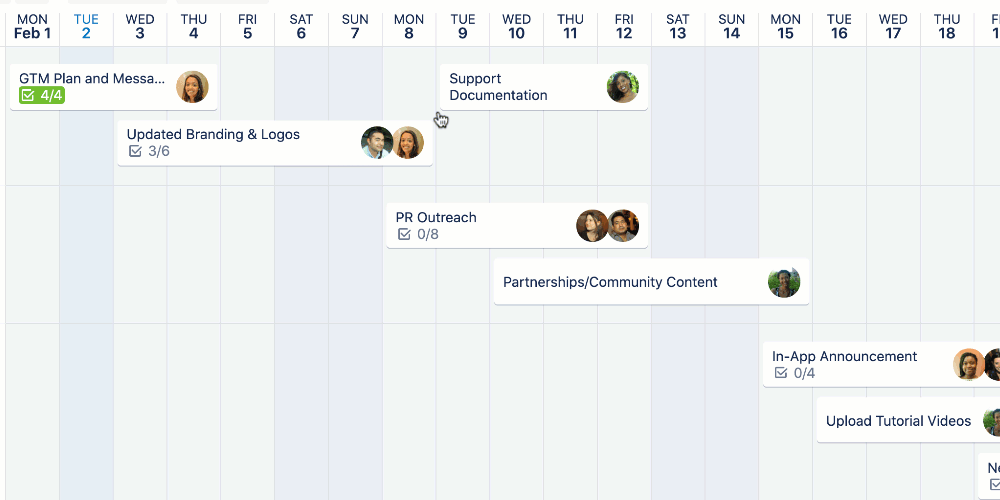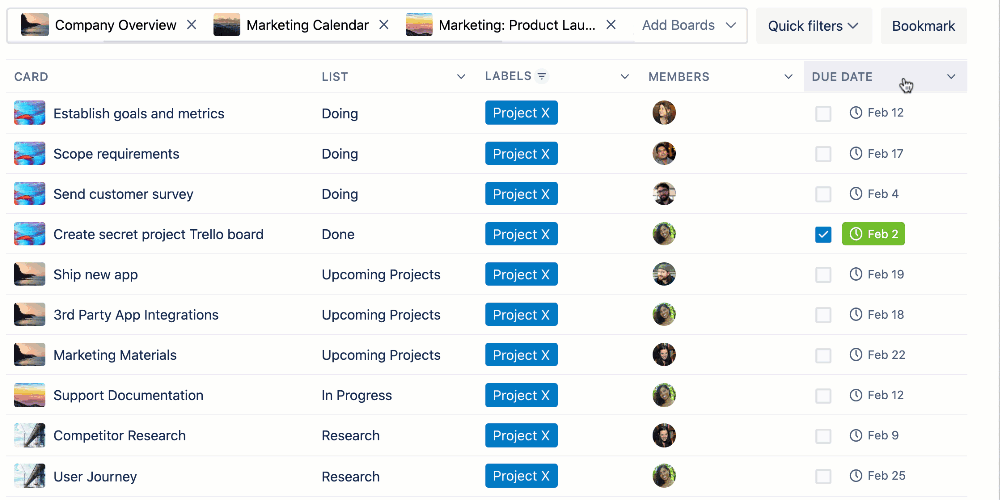Atlassian launches a whole new Trello
Trello, the Kanban board-centric project management tool acquired by Atlassian in 2017, today launched what is likely one of its most important updates in recent years. With significantly more than 50 million users, Trello is one of the most popular project management tools around, and in many ways it brought digital Kanban boards to the mainstream. That focus doesn't change with today's release, but the team is now adding a slew of new board views and new capabilities to the individual cards that make up those views, with a special focus on bringing more data from third-party tools right into those cards. That's in addition to a number of changes to the overall look and feel of the service.
Over the years, we've built this huge, passionate audience of people," Michael Pryor, Trello's co-founder and now Atlassian's head of Trello, told me ahead of today's announcement, We have way over 50 million signups - and that 50 million number is from 2018 or something, they won't let me yet give out the current number. [ ... ] Then last year, the pandemic hits. We talked about the future of work, right? And then, all of a sudden, it was like: nope, that's just work. That's how everyone works. Now, it's all distributed. We just compressed it all at once. And we had this overnight shift. We would talk previously about this explosion of apps, we would talk about all the browser tabs, people getting lost in information sprawl. Now, it's just turned up to eleven."
The reason behind a lot of the new features was to make it easier for users to do more work inside of Trello and to get better macro views of what teams are working on themselves, but also what is happing across teams and inside an organization. In addition, the new Trello adds more ways to see data from other tools natively inside the service, without having to switch tools.

Image Credits: Atlassian
In practice, that means Trello is adding five new views to Trello (and making it easy to switch between them): team table view for tracking cross-company or cross-project work in a spreadsheet-like fashion; timeline view for managing roadblocks and making data adjustments; calendar view for tracking deadline and time-sensitive tasks; map view for users who have location-based projects; and finally dashboard view for better visualizing success metrics and building reports.
For the most part, the names here are self-explanatory. What's maybe the most interesting feature here, though, is that the new team table view is Trello's first view that brings in multiple boards.
It raises your perspective up to the portfolio level - not just at a single board level," Pryor said. Eventually, all the views will do that same thing and so we will essentially have this ability that if you're on a board, you can pivot your cards and look at them depending on what the project is and how you need them." The idea here, he explained, was to use and extend Trello's existing visual language to add these shared perspectives.
What's also important here is that Trello plans to open this feature to third parties that may want to build their own views as well. The Trello team itself, for example, built a slide view that automatically creates slides for all of the cards in a project to make it easy for somebody to present them in a meeting, for example.

Image Credits: Atlassian
Pryor argues that what Trello is doing with its new cards, though, is maybe even more important. The team is adding over 30 new card types where, just by adding a URL that links to YouTube, Google Drive, Figma, JIRA or even other Trello boards, you'll be able to see previews of what you linked to right inside of Trello.
What that does, I think, is that it elevates what that card represents from just being a thing that exists only within Trello to represent work that's happening across all these other tools," Pryor explained. So now your Jira tickets can exist alongside your Trello cards. And you're categorizing that and moving and talking about it in a way that's independent of what's happening in Jira - it could be connected to it, but it adds this ability to create a dashboard that brings all that work into one place."

Image Credits: Atlassian
Pryor noted that the team wanted to leverage the simplicity and visual language that Trello's users already love and then apply that to other tools. We could get into a race and just build project management-type features," he said. The team wants to build more than just a project management app. It wants Trello to be an app that helps users manage all of their projects. Just adding features, he argues, would just lead to bloat. Instead, the team wants to take its card metaphor, expand on that and allow its users to build new solutions inside of Trello, using a visual language they are already familiar with.
Another new feature that's coming soon - and one that the Trello community has been expecting for a while - is mirror cards, which essentially allow you to share the same card between boards. All you have to do is link from a source card to a card on another board and that new card will look just like the original card.